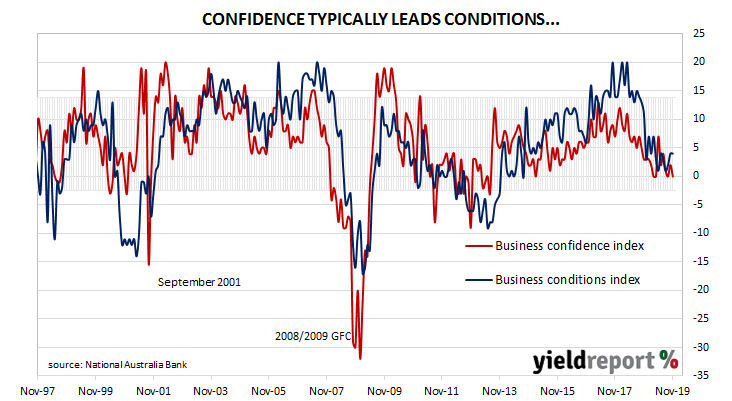Australian business conditions were robust in the first half of 2018 and a cyclical-peak was reached in April of that year. However, readings began to slip. By the end of 2018, they had dropped to below-average levels and forecasts of a slowdown in the domestic economy began to emerge in the first half of 2019. Since then, readings from NAB’s monthly surveys have varied very little.
According to NAB’s latest monthly business survey of 400 firms conducted in the latter part of November, business conditions continued to bump along at below-average levels. Since late 2018, NAB’s conditions index bounced between 3, which is on the low side of normal and 7, which is about average. The index then broke through this lower bound in May 2019. The latest reading registered 4, the same reading as in October after it was revised up from 3.

While the conditions index remained unchanged, the latest reading of NAB’s confidence index fell a couple of points, from October’s reading of 2 to 0 in November, well below its long-term average reading of 6. Typically, NAB’s confidence index leads the conditions index by approximately one month, although some divergences appear from time to time.
NAB’s chief economist, Alan Oster, said business conditions look as if they “have stabilised at low levels”. Westpac senior economist Andrew Hanlan was less generous with his analysis. “The NAB survey suggests that weak conditions have extended into the December quarter and there is a lack of momentum heading into 2020.”

